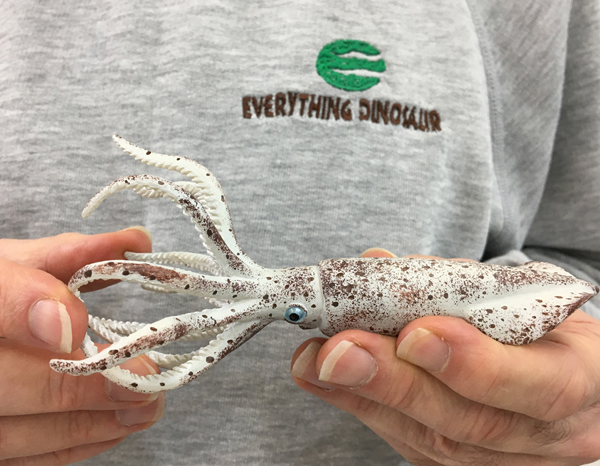Spotting Belemnites in Stone Floor Tiles
Fossils can be found in unusual places. A few years ago, we reported on an initiative by Liverpool John Lennon Airport to encourage passengers to explore the various fossils that could be found entombed in the stone floor and the pillars of the concourse building. As limestone is used in many construction projects, it is surprising where fossils of ancient life forms can be spotted. For example, whilst in Germany, an Everything Dinosaur team member spotted a beautiful belemnite guard preserved in cross-section in a floor tile.
Belemnite Fossil Found in a Stone Floor Tile

Picture credit: Everything Dinosaur
Spotting a Belemnite
The term “belemnite” is derived from the Greek for “dart”. Looking at the fossil preserved in the stone floor tile, it is easy to see the reason for the name of these Mesozoic cephalopods.
The guard is the internal skeleton of the belemnite, it consists of a solid piece of calcite and these fossils can be found in their hundreds in rocks dating from the Lower and Middle Jurassic. However, they are also abundant in many Cretaceous marine clays. The anterior portion of the guard (seen on the left of the photograph), would contain the phragmocone, the cone-shaped chambered shell that demonstrates that these nektonic animals were related to ammonites. In many instances, the phragmocone is lost, leaving a “U” shaped hollow that can be seen in the picture (above).
Some Belemnite Fossils Collected from the “Jurassic Coast” (Dorset)

Picture credit: Everything Dinosaur
To read Everything Dinosaur’s article about fossil hunting around John Lennon airport: Fossil Hunting at John Lennon Airport (Liverpool).
A Model of a Belemnite
Picture credit: Everything Dinosaur
The image (above) shows the CollectA Prehistoric Life belemnite figure.
To view this range: CollectA Prehistoric Life Models.
Given the amount of sedimentary rock used in buildings, you never know when you might be going on a fossil hunt.
Visit the award-winning Everything Dinosaur website: Everything Dinosaur.







Leave A Comment